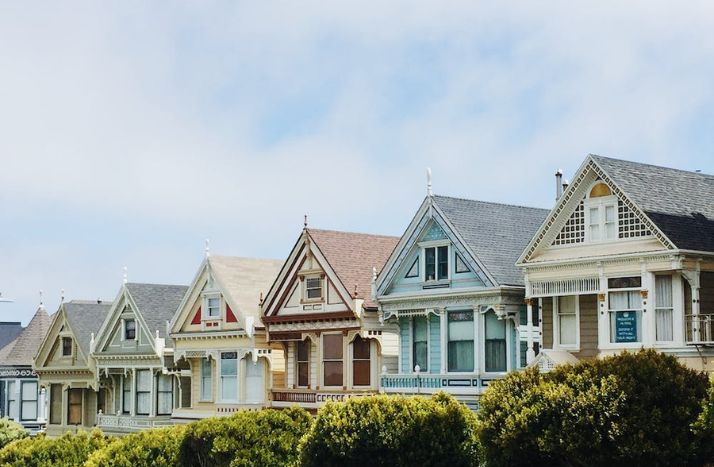From Ancoats in Manchester to Savamala in Belgrade, many European cities can claim iconic neighbourhoods that have emerged from forgotten industrial zones. Barcelona is no exception, with the resurgent Poblenou set to take a well-earned place on the list of landmark city areas – centres of art, design, technology and culture – that define a next-generation Europe.
The appeal of Poblenou is enhanced by its enviable position beside the sea, with beaches and promenades that combine with the parks and plaças to evoke the lifestyle that sees Barcelona consistently placed highly on the ‘world’s best places to live’ rankings.
Poblenou’s main thoroughfare is the Rambla de Poblenou, which has retained a flavour of its past as a bustling local focus for the timeless pastimes of trade and socialising. Stretching from Diagonal to the beach, the Rambla has a range of shops, restaurants, markets and bars that seem to stand in charming and authentic defiance of the multibillion-Euro revolution taking place on its flanks.
The overall plan for a brighter and more creative future is known as the 22@ Project, and it is a bold one. The heavy investment is designed to make Poblenou one of Europe’s most advanced and admired hubs of technology and e-commerce, tasked with taking the world forwards and defining the future of international innovation.
Big names are getting behind the plan as it gathers momentum, including Amazon, Facebook and Microsoft, and this heavy-hitting attention has inevitably enhanced demand for rental and living spaces in the neighbourhood tagged as Europe’s new Silicon Valley. In September 2018 Barcelona was named as the 4th city in the world where most people would like to work, ahead of the likes of Amsterdam, Berlin and Tokyo.
Of course, once the tipping point is reached, ‘support’ industries are keen to join in the fun. Educational establishments have set up locally to supply these demanding employers with high quality people talented in the dark digital arts, while bars, restaurants and clubs offer after-hours opportunities in large spaces with added character.
The transformation of Poblenou started back in the late 1980s in preparation for the 1992 Olympic Games. This was when the industrial landscape began to make way for residential development with an initial focus around the Vila Olímpica and Port Olímpic de Poblenou.
This area is easy to identify by the towering Hotel Arts and Frank Gehry’s shining Peix d’Or (Golden Fish). This shining sculpture has become an unmissable landmark on the border between Barceloneta and Poblenou.
Many historic buildings have inevitably been lost as the pace of regeneration has increased, but exceptional examples remain and are dotted throughout the burgeoning monuments to modern design and tech-industrial development.
New landmarks include the iconic Torre Agbar, which stands proudly on the junction of Avinguda Diagonal as an apparent tribute to London’s taller 30 St Mary Axe, aka The Gherkin. Torre Agbar overlooks Plaça de les Glòries Catalanes, a triumph of urban transport planning, but also a morphing testament to a new world of open spaces, clean-cut edges and buildings dedicated to cultural appreciation.
“Whether you compare Poblenou to Lower Manhattan or the London Docklands, when it comes to living there’s no denying the similarities in terms of architectural appeal. From gleaming towers in Port Forum with glass balconies, 24-hour gyms and sweeping views up and down the Barcelona coastline to atmospheric lofts paying open-plan tribute to industrial days of yore, the property market has something for everyone.”
Francisco Nathurmal, CEO BCN Advisors
Developers are trying hard to match demand from the artistic and creative elite, but they continue to deliver properties that attract buyers looking for a cool home – near their industrial-chic shared offices or gleaming corporate HQs that are sprouting and flourishing in rows up and down Avinguda Diagonal and towards the sea.
Cutting-edge communication may be behind every doorway, but the more simple task of getting around is also well-considered, with plenty of metro, bus and tram routes to whisk you into the centre of the city in under 10 minutes. The area is also well-served by the easy-access road system that takes you out to the airport or on the motorway north to the Costa Brava and France.
According to property portal Idealista sales prices in the district of Sant Martí, which includes the neighbouhood of Poblenou, ended the second quarter of 2018 on €4,179 per square metre, up €195 on the price at the end of 2017 and significantly higher (31%) than the price at the end of the second quarter of 2014.
The secret may be out, but with development set to continue into the bold new world of hyper-technology, Poblenou represents not only a vision of the future but also an excellent long term investment opportunity.


 How to Sell a Flat in Sarrià: A Guide for Property Owners
How to Sell a Flat in Sarrià: A Guide for Property Owners
 The new capital gains tax in Spain
The new capital gains tax in Spain
 Top International Companies in Barcelona
Top International Companies in Barcelona
